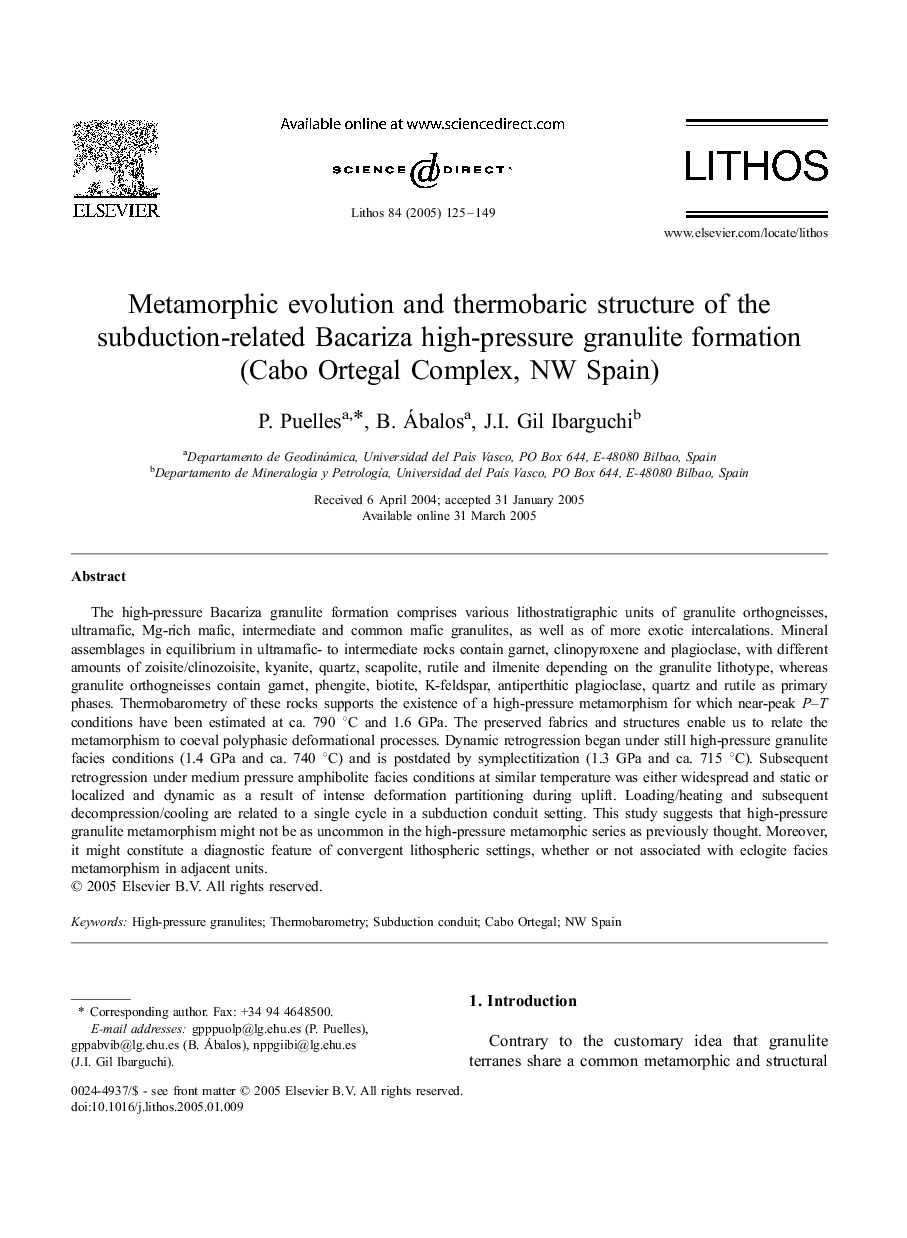| Article ID | Journal | Published Year | Pages | File Type |
|---|---|---|---|---|
| 9531959 | Lithos | 2005 | 25 Pages |
Abstract
The high-pressure Bacariza granulite formation comprises various lithostratigraphic units of granulite orthogneisses, ultramafic, Mg-rich mafic, intermediate and common mafic granulites, as well as of more exotic intercalations. Mineral assemblages in equilibrium in ultramafic- to intermediate rocks contain garnet, clinopyroxene and plagioclase, with different amounts of zoisite/clinozoisite, kyanite, quartz, scapolite, rutile and ilmenite depending on the granulite lithotype, whereas granulite orthogneisses contain garnet, phengite, biotite, K-feldspar, antiperthitic plagioclase, quartz and rutile as primary phases. Thermobarometry of these rocks supports the existence of a high-pressure metamorphism for which near-peak P-T conditions have been estimated at ca. 790 °C and 1.6 GPa. The preserved fabrics and structures enable us to relate the metamorphism to coeval polyphasic deformational processes. Dynamic retrogression began under still high-pressure granulite facies conditions (1.4 GPa and ca. 740 °C) and is postdated by symplectitization (1.3 GPa and ca. 715 °C). Subsequent retrogression under medium pressure amphibolite facies conditions at similar temperature was either widespread and static or localized and dynamic as a result of intense deformation partitioning during uplift. Loading/heating and subsequent decompression/cooling are related to a single cycle in a subduction conduit setting. This study suggests that high-pressure granulite metamorphism might not be as uncommon in the high-pressure metamorphic series as previously thought. Moreover, it might constitute a diagnostic feature of convergent lithospheric settings, whether or not associated with eclogite facies metamorphism in adjacent units.
Related Topics
Physical Sciences and Engineering
Earth and Planetary Sciences
Geochemistry and Petrology
Authors
P. Puelles, B. Ábalos, J.I. Gil Ibarguchi,
